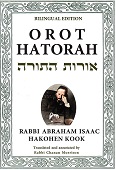
The ultimate moment of glory for the Jewish people — their greatest hour — occurred as God revealed His Torah to them at Mount Sinai. The Israelites made an amazing proclamation: Na’aseh VeNishma — “We will do and we will listen to all that God has declared” (Exod. 24:7).
They promised two things: to do, and to listen. The order is crucial. They promised to keep the Torah, even before knowing why. The Midrash (Shabbat 88a) says that, in merit of this pledge of loyalty, the angels rewarded each Jew with two crowns. And a Heavenly Voice exclaimed, “Who revealed to My children this secret that is used by the angels?”
What was so special about this vow, “we will do and we will listen”? On the contrary, would not fulfilling mitzvot with understanding and enlightenment be a higher level of Torah observance? And why is this form of unquestioning allegiance a “secret used by the angels”?
Intuitive Knowledge
While wisdom is usually acquired through study and reflection, there exists in nature an intuitive knowledge that requires no formal education. The bee, for example, naturally knows the optimal geometric shape for building honeycomb cells. No bee has ever needed to register for engineering courses at MIT.
Intuitive knowledge also exists in the spiritual realm. Angels are sublime spiritual entities who do not need Torah studies in order to know how to serve God. Their holiness is ingrained in their very nature. It is only human beings, prone to being confused by pseudo-scientific indoctrination, who need to struggle in order to return to their pristine spiritual selves.
For the Jews who stood at Mount Sinai, it was not only Torah and mitzvot that were revealed. They also discovered their own true, inner essence. They attained a sublime level of natural purity, and intuitively proclaimed, “we will do.” We will follow our natural essence, unhindered by any spurious, artificial mores.
(Gold from the Land of Israel, pp. 142-143. Adapted from Mo'adei HaRe’iyah p. 486)





